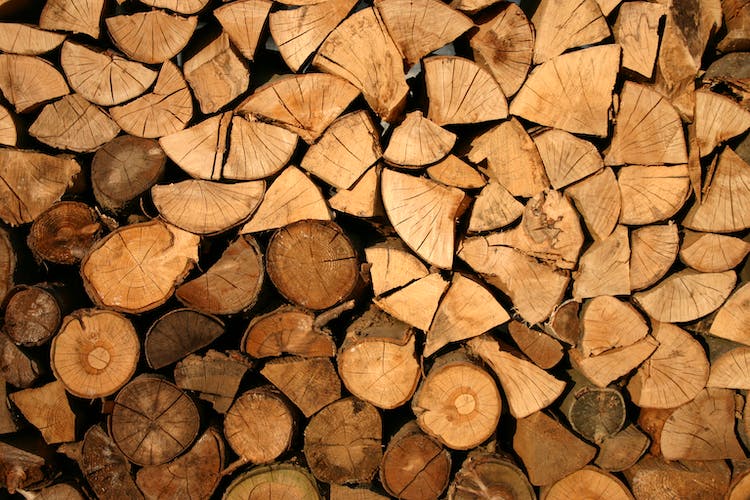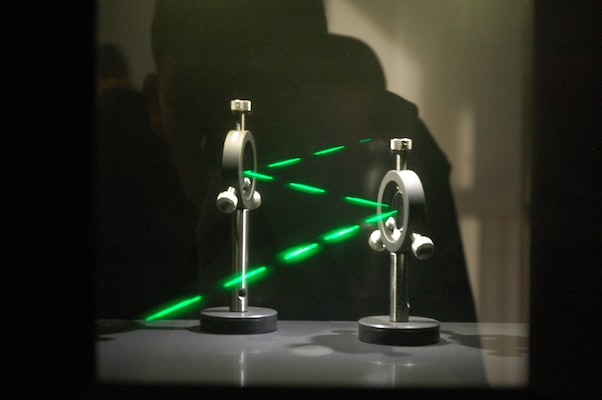The laser cutting speed technologies of today have become increasingly advanced allowing for faster and more efficient manufacturing processes. Cutting with the use of lasers has become the go-to method for precision manufacturing across various sectors. There have been numerous latest innovations in the field of laser cutting speed technologies. These developments have brought much needed improvements to the speed and accuracy of laser cutting processes and have enabled us to manufacture parts with improved precision and speed. In this article, we will discuss the latest innovations in laser cutting speed technologies and how they are revolutionizing today’s manufacturing process.
Advantages of Laser Cutting
Increased precision and accuracy
Laser cutting technology is a new and innovative method of cutting and shaping materials that is quickly becoming the standard in industries such as automotive and aerospace. Laser cutting technology offers some distinct advantages, like increased precision and accuracy of cuts, when compared to traditional techniques, like manual cutting and drilling. This is due to the laser’s ability to accurately and precisely cut through materials with very little wasted material.
Improved speed and efficiency
Laser cutting technology has revolutionized the way many companies are cutting and constructing materials. This technology has allowed for more precise cuts and more efficient production, allowing companies to meet their deadlines faster and more cost-effectively. By using laser cutting, many industries can now achieve higher cutting speeds than ever before.
The latest innovations in laser cutting technology have allowed for increased cutting speed and efficiency compared to other traditional cutting methods.
Adaptability to a variety of materials
One of the major breakthroughs in laser cutting speed technologies has been its adaptability to a variety of materials. This advancement has been a major game-changer in the industry, as it opens up the ability to perform laser cutting on materials that previously could not have been cut easily. The new technology is able to detect the material’s surface texture and density, as well as other parameters, to accurately cut with amazing precision.

Latest Innovations in Laser Cutting
New beam delivery systems
The pace of technological advancements in laser cutting speed technology is ever-increasing. Recent innovations in new beam delivery systems have drastically improved the speed and accuracy of laser cutting. This type of new technology requires specialized tools and materials, making it much more efficient than traditional cutting methods.
New beam delivery systems are able to transmit the laser beam up to 50 times faster than before, creating higher laser cutting speeds that can finish projects faster. This new technology uses optical fibers in order to move the beam quickly and accurately and has allowed for more precise cutting that can be done with a minimum of time.
Fine control technologies
In recent years, laser cutting technology has continually evolved to allow manufacturers to develop increasingly advanced methods of cutting hard and soft materials alike. One sector of laser cutting that has particularly seen a surge of innovation is in the pursuit of faster cutting speeds. Thanks to the rapid improvement of new technology, laser cutting machines are now setting higher and higher records for cutting speeds.
The emergence of fine control technologies has enabled laser cutting machines to achieve one of their key goals – faster cutting speeds.
Automation for increased throughput
When it comes to laser cutting technologies, automation is one of the most important advancements that has been made in recent years. Automation allows a cutting machine to carry out complex operations, while dramatically increasing the throughput and cutting speeds. This new technology has made laser cutting much faster and more accurate than ever before.
By automating the process, it has allowed manufacturers to speed up their production process and reduce waste at the same time. The increased speed has also meant that manufacturers are now able to cut shapes and designs with higher precision and accuracy than ever before.

Overview of Laser Cutting Speed Technologies
Variable pulse technology
Variable pulse technology has revolutionized laser cutting speed technologies in recent years. This new technology offers more precise and accurate cutting, allowing for more efficient processing. It is especially useful for cutting thick and dense materials.
Variable pulse technology uses a shorter laser pulse, which results in a smaller heat-affected zone. This decreases the time needed to cut, resulting in improved cutting speeds. When combined with galvanometer technology, the short pulse makes it possible to move the laser spot in three dimensional space at incredible speeds.
Acoustic power modulation
The latest developments in laser cutting speed technologies involve acoustic power modulation. This cutting-edge technology modifies the power and shape of a laser beam by using sound waves to spread and transmit acoustic energy within it. This process expedites laser cutting processes, allowing operators to cut and assemble products faster than ever before.
Acoustic power modulation works by allowing the laser beam to adjust the power of the focused light, by making the spatial intensity of the beam non-uniform, while still ensuring the quality of the edge. This process is made possible by using a sound wave generator to compress, spread and transmit acoustic energy through the laser beam.
Scanning technology
When it comes to laser cutting technology, scanning technology and the speed of the process are both very important in order to improve efficiency and reduce time spent. New laser cutting technologies have enabled faster cutting speed than ever before, and one key element of achieving that speed is by utilizing advanced scanning technology. Scanning technology allows a laser cutting machine or robotic arm to quickly move over the surface that needs to be cut.
By quickly scanning the area, the cutting process can begin much sooner than if it were done manually. This increases the potential cutting speed dramatically, only limited by the machine’s capabilities.

Evaluation of Laser Cutting Technologies
Benefits for specific industries
The latest innovations in laser cutting technology have revolutionized the way many industries work. From automotive manufacturing to aerospace engineering, laser cutting is one of the most efficient and effective ways to carve and shape a wide range of materials. Not only is laser cutting drastically faster than traditional cutting methods, it also produces practically no dust which is essential for many production and engineering applications.
Moreover, laser cutting typically uses significantly less energy than other cutting methods, making it a great option for industries looking to reduce costs. The speed at which laser cutting can be done is remarkable.
Challenges for implementation
When it comes to evaluating laser cutting technologies, one of the major challenges for implementation is cutting speeds. For many businesses, achieving a high degree of cutting precision and speed is a must. As new laser cutting technologies emerge on the market, businesses must remain current and up-to-date with these advances in order to stay competitive.
The most recent laser cutting technologies offer cutting speeds that exceed previous generation speeds by orders of magnitude. This can be achieved through not only improved hardware, but also more efficient and advanced software driving these systems. Being aware of these advances and understanding their applications is essential in order to make informed decisions when evaluating laser cutting technologies.
Conclusions on success of laser cutting
When it comes to the success of laser cutting technology, it’s clear that there has been an impressive amount of advancement over the past decade. The latest innovations in laser cutting speed technologies have been revolutionary, making it easier and faster than ever to cut through a variety of materials with precision, accuracy and high efficiency. Of particular note is the increase in cutting speeds when compared to other, more traditional cutting methods.
This advancement has led to a major boost in productivity across a wide range of industries and has paved the way for future technological advancements. The evaluation of laser cutting technologies provides insight into how successful these advancements have been in terms of their potential to improve production rates and create new opportunities.

What is the fastest laser engraver?
When thinking of the latest innovations in laser cutting speed technologies, one of the first things to consider is what is the fastest laser engraver on the market. Laser cutting technology is continually developing, and manufacturers are working hard to develop new technologies that can improve cutting speed and accuracy. The current market leader in terms of cutting speed is the Fiber Laser Cutter, which is up to four times faster than traditional CO2 laser cutters.
Conclusion
Summary of discussion
As we’ve explored in this discussion of the latest innovations in laser cutting speed technologies, significant opportunities exist to enhance the efficiency of laser cutting using new technology. Particularly, the advent of new laser cutting processes and powered by dedicated high-speed beam delivery systems have shown short cycle times, improved productivity, and shorter cutting times. This advancement has huge potential for a variety of different applications, from automotive manufacturing to watch making.
Furthermore, the development of specialized cutting strategies and intelligent use of cutting speed has enabled further efficiency gains. This has lead to greater and finer shapes that can be integrated into a variety of objects while reducing heat-affected zone sizes.
Impact of latest laser cutting technologies
The latest innovations in laser cutting technology have revolutionized the laser cutting industry. By utilizing cutting-edge laser technology, laser cutters can now cut and shape materials faster than ever before. This increased cutting speed is an incredible boon for many industries that require precision cutting, such as the automotive, aerospace, and medical industries.
The increased speed provided by these new laser cutting technologies allow these industries to fabricate parts much faster than ever, significantly reducing their lead times.
Outlook for future development
When it comes to the outlook of laser cutting speed technologies, the future is gratifyingly bright. Every day, new innovations are announced that can make laser cutting fabrication faster and more efficient. Research and development teams are hard at work exploring the possibilities of incorporating new technologies for laser cutting speed.
Even now, in 2020, the cutting speed of laser cutting systems continues to improve and the introduction of new technology provides industry professionals with more access to cut high-end materials with intricate details at a faster speed. It’s exciting to imagine what will come in the following years.

